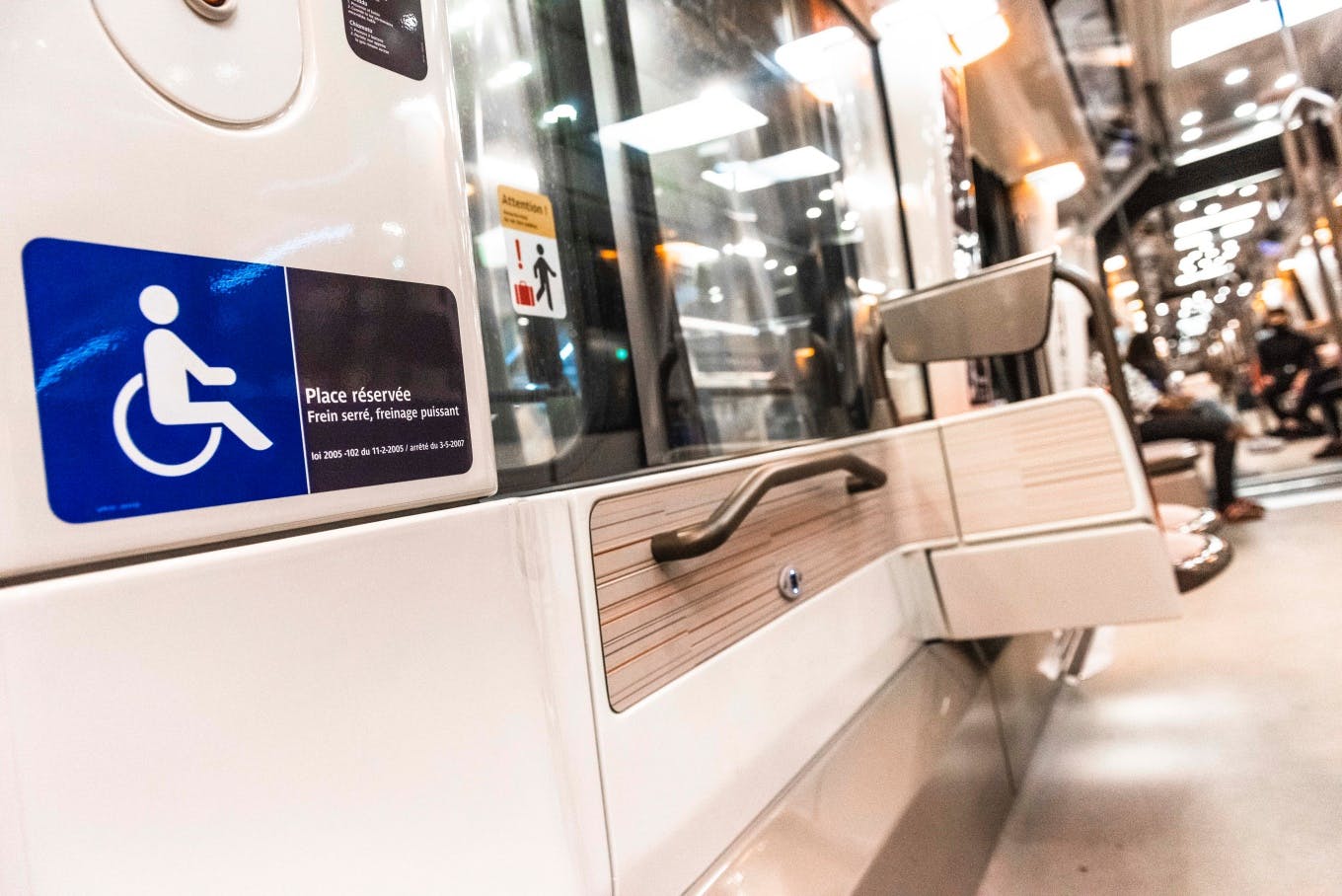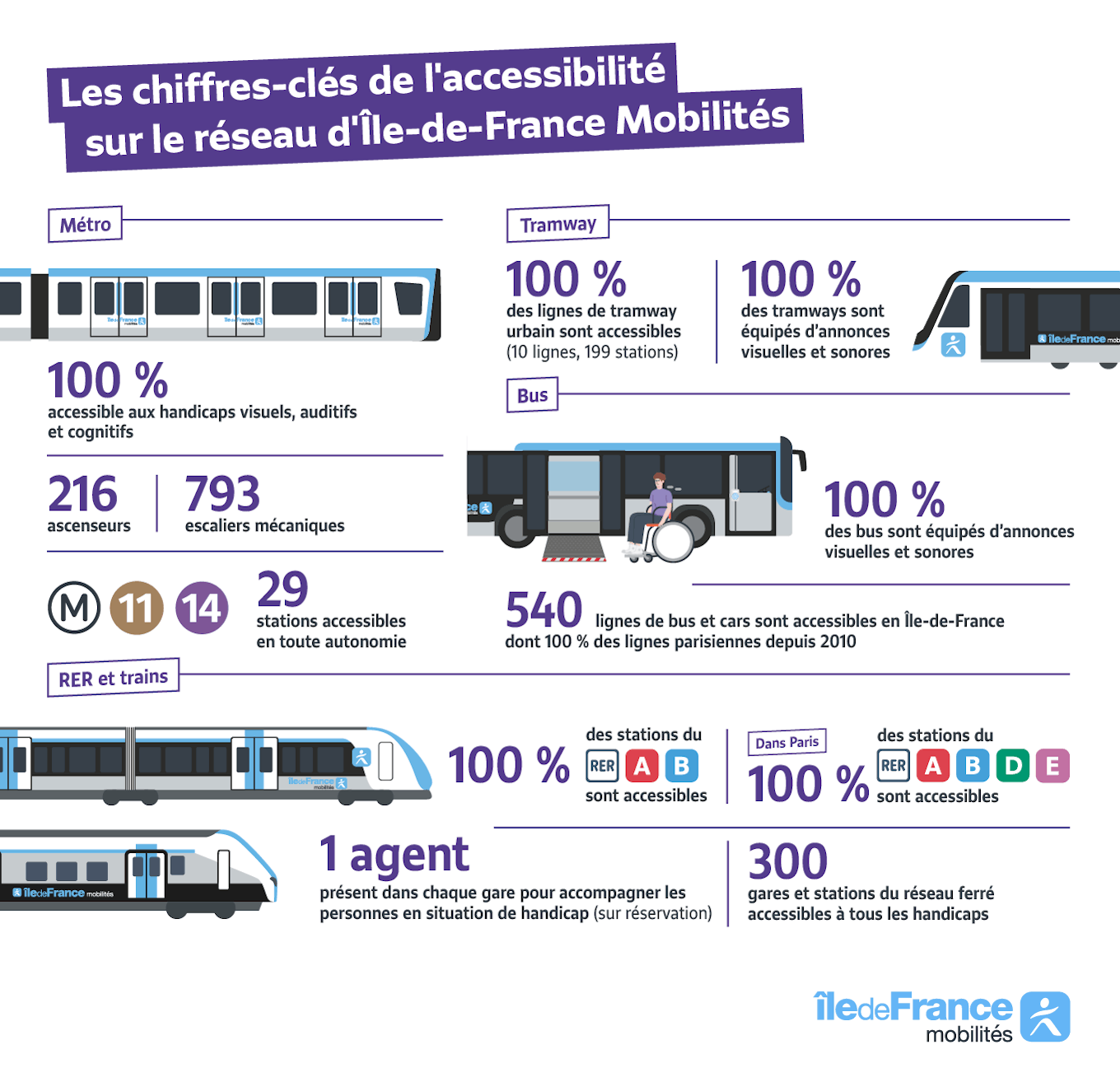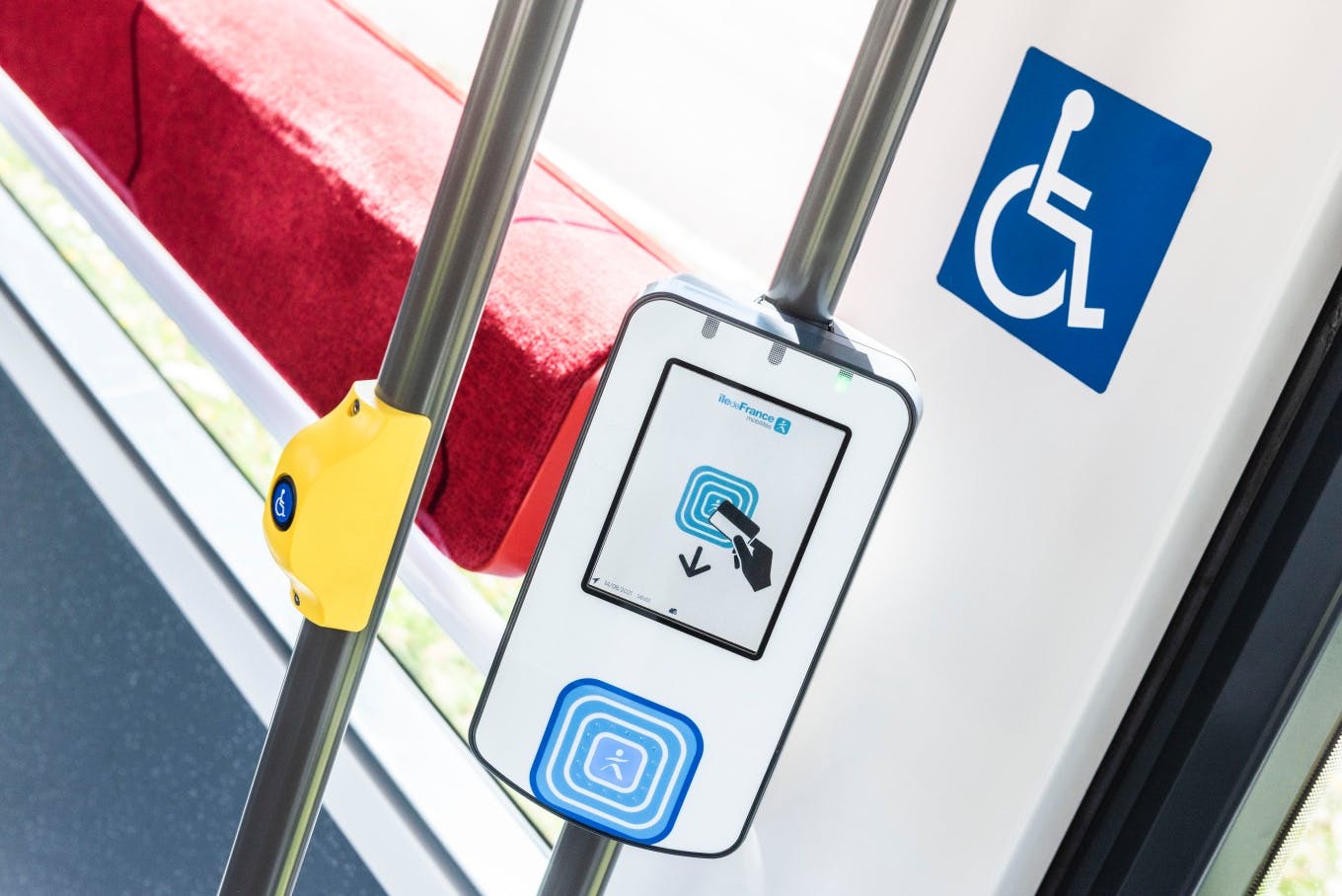The Disability Act is 20 years old. And in transport, where do we stand?

On 11 February 2005, Law No. 2005-102 on equal rights and opportunities, participation and citizenship of people with disabilities was passed.
At the heart of this law is the independent access of people with disabilities to transport systems. Article 45 of this law specifically states that: "The chain of travel, which includes the built environment, roads, the development of public spaces, transport systems and their intermodality, is organized to allow its accessibility in its entirety to disabled people or people with reduced mobility."
The law specifies in particular the obligation to make public transport networks accessible to all types of disabilities, within a set period of 10 years. The law will be supplemented in 2014 by ordinances (the Sd'Ap), which will set a new deadline (2024) for the implementation of accessibility works.
In Île-de-France, 4 out of 10 Ile-de-France residents are temporarily or permanently disabled.
So, 20 years later, where do we stand in Ile-de-France transport?

Key figures on accessibility on the Île-de-France Mobilités network
Subway
- 100% accessible to visual, hearing and cognitive disabilities
- 216 elevators
- 793 escalators
Tram
- 100% of urban tram lines are accessible (10 lines, 199 stations)
- 100% of trams are equipped with visual and audible announcements
Bus
- 100% of buses are equipped with visual and audible announcements
- 540 bus and coach lines are accessible in Île-de-France, including 100% of Parisian lines since 2010
Metro lines 11 and 14
- 29 stations accessible in complete autonomy
RER and trains
- 100% of RER A and B stations in Paris are accessible
- 100% of RER A, B, D and E stations are accessible
- 1 agent present in each station to accompany people with disabilities (by reservation)
- 300 railway stations accessible to all disabilities
€2.4 billion to make transport in the Ile-de-France region accessible
Since 2016, Île-de-France Mobilités has invested more than €2.4 billion in a major policy to transform its network. A policy carried out hand in hand with associations, operators, local authorities and the Île-de-France Region.
The goal? To improve accessibility, comfort and bring ever more independence to people with disabilities in public transport.
New lines, extensions and stations: accessible!
While the historic Paris metro presents a huge accessibility challenge, particularly for people in wheelchairs, all the projects for new stations and stations, new lines, line extensions or new vehicles (metros, buses, trams, RER and trains) undertaken since 2005 have been designed in compliance with accessibility standards and offer connections with lines that are also accessible.
300 accessible stations
In recent years, the investments made by Île-de-France Mobilités have made it possible to make 300 stations on the train and RER network accessible and 97% of passenger traffic on the rail network, thanks to the accessibility of the most important stations in the Ile-de-France network with high ridership, such as Saint-Denis station, one of the main stations in the region with 27 million annual passengers, with a project to the tune of 165 million euros.
10 tram lines and 199 stations to accommodate all audiences
In addition to these stations, there are also 10 tram lines and 199 stations, all of which are fully accessible to all and improve the journeys of users with reduced mobility.
Buses and coaches: ever more accessible
540 bus and coach lines throughout the Île-de-France region, including 100% of Parisian lines.
Metro: new lines and extensions accessible
Finally, with regard to the metro, the most difficult project to implement due to the geography of Paris and urban constraints, there are now 29 stations accessible in complete autonomy, including 21 on line 14, which is fully accessible, and 8 stations on line 11, recently extended to Rosny-Bois-Perrier. By 2031, 68 additional stations will be added to the accessible Ile-de-France metro, with lines 15, 16, 17 and 18.

Is the historic Parisian metro accessible? The construction site of the century for the "Metro for all"!
This is THE most complex point in making the Ile-de-France metro accessible: the Paris metro. Circulating under countless nineteenth-century Haussmannian buildings, composing with the multitude of networks that cross the basement, the historic metro (lines 1 to 13), one of the oldest in the world, is still not sufficiently accessible to people with reduced mobility.
A complex situation, difficult to resolve, but which does not prevent work from being undertaken to improve the accessibility of the historic network. Thus, in October 2024, Île-de-France Mobilités organised the first Metro Accessibility Conference, in partnership with the Île-de-France Region, to bring together all the stakeholders involved.
As a result, the "Metro for all" project was launched. The objective: to concretely initiate the transformation of the historic Paris metro. An ambition estimated at between 15 and 20 billion euros, committed over 20 years. An investment divided equally between the Île-de-France Region, the city of Paris and the State.
The 3 concrete advances of the "Metro for all" project
- €1 million released to finalise the feasibility study for the accessibility of line 6 (the first pilot line to be made accessible)
- €3 million to map the entire metro network and find concrete solutions
- Creation of a "Metro for all" committee with the Region, the City of Paris, the departments concerned, the RATP and the State to work hand in hand
100% accessible alternatives for getting around Paris
While waiting for the revolutionary advances of the Metro for all, 100% of metro lines are now accessible to intellectual, visual and hearing disabilities, as are the Ile-de-France RER and train lines, labelled Cap'Handéo "Mobility Services", the only nationally recognised certification.
For people with reduced mobility, they can move around Paris independently by taking buses, trams (T3a, T3b, T2, T9) and RER lines, since the RER stations and rolling stock on the RER A, B, D and E lines are 100% accessible in the capital.